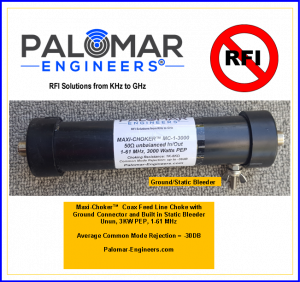Below are two great examples of why grounding, draining static, and disconnecting our antennas from our rigs when not in use are SO important!
In both videos, we can see the end of the coax arcing between the center conductor and the shield. Electrical energy in the air and/or the wind can contribute to a buildup of static on the driven element of the antenna that can flow back through the cable until it can find a place to jump to ground.
This is a great reason to make sure that your antennas are removed from your rig when not in use.
I use the Palomar Engineers Maxi-Choker with the static bleeder option on my outdoor antennas. In addition to providing 30db of common-mode noise reduction, the static bleeder option will dump any static building out the ground stud. I place this filter at the feed point of my antenna and attach the ground stud to an 8-foot ground rod.

Three things that you realy should do,
1, High Pass at 1.5 MHz with integral low frequency path to ground of around 100kR close to the antenna.
2, Good quality Nobel Gas discharge gap lightning arester to ground as close to shack main ground point.
3, second high Pass filter, followed by either a hard switch to ground or low value impedence to ground.
The first helps protect the feed line and the second. The second helps protect the shack, the people inside and the third. The third further helps protect the equipment and the people inside the shack.
Following the third if you know what you are doing very high power very fast rising edge construction wise should have a three dB pad with transorbs and neon gaps to ground. If dome right it’s starting to get into EMP protection land. Dealing with fast rising edges needs almost microwave circuit design/layout techniques.
Further a switched filter bank with circulator where inband goes to the receiver and out of band goes to a dummy load.
Clive,
Awesome tips! I really appreciate those details.